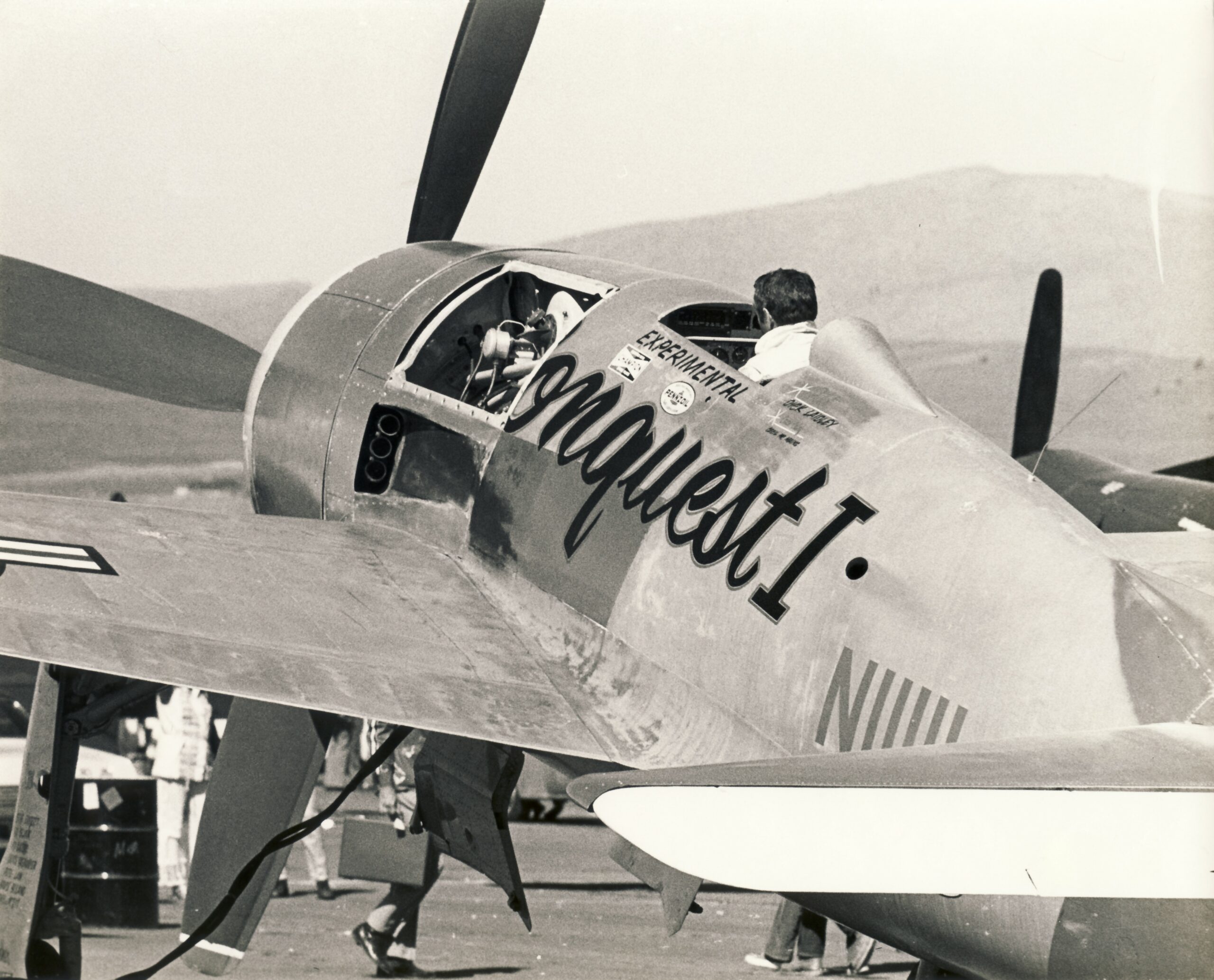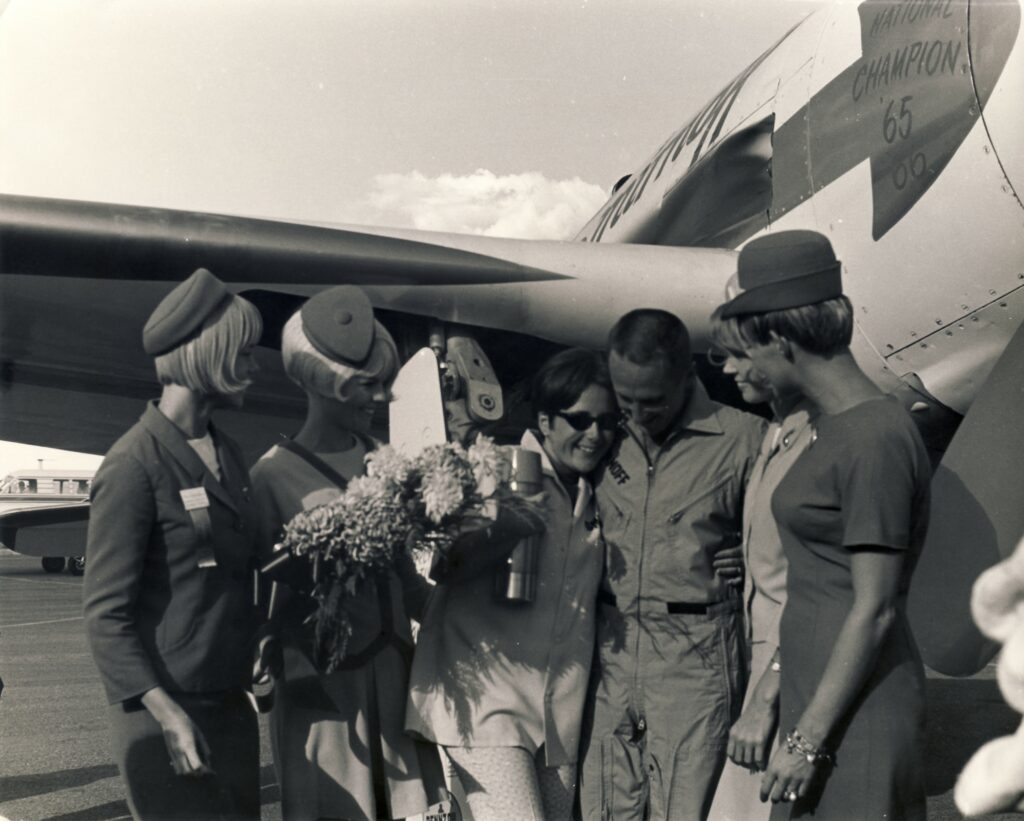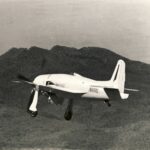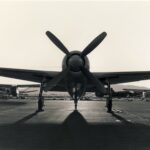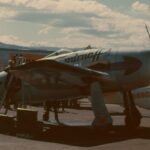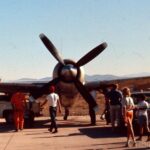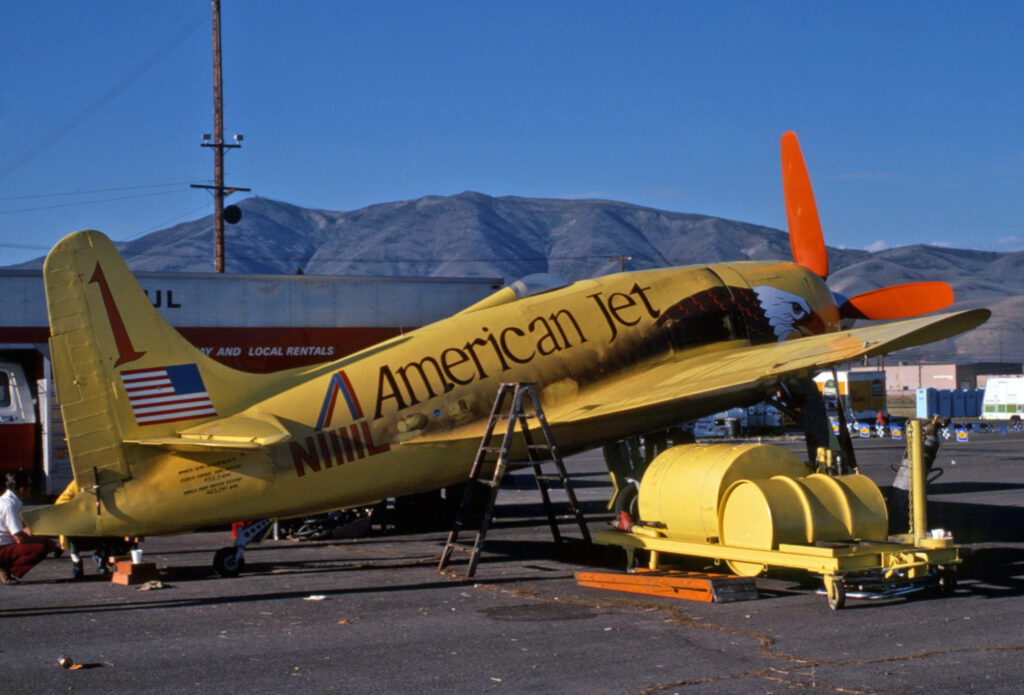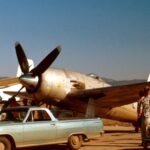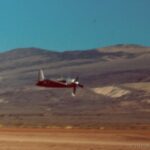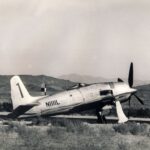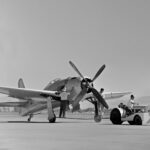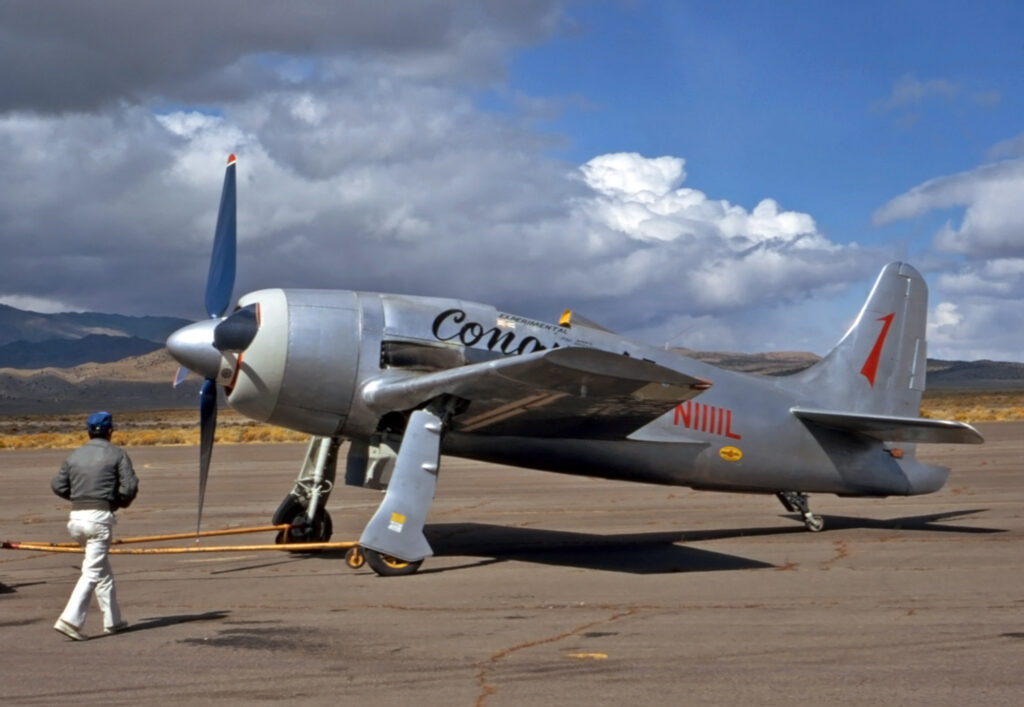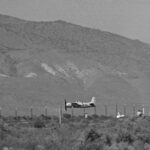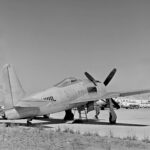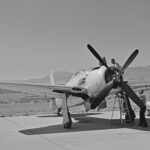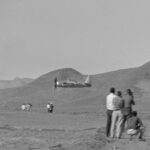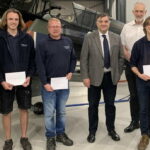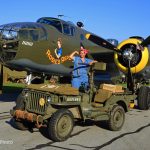Today marks the 54th anniversary of Darryl Greenamyer capturing the 3Km World Speed Record. In 2012 Stephen Chapis interviewed Darryl and wrote an excellent article about it. Here is an abbreviated version adapted for the web. Enjoy it!
By Stephen Chapis
In September 2012, I was fortunate to interview Darryl Greenamyer about his air racing career, including his time at the controls of Grumman F8F-2 BuNo 121646. He first spoke about why he chose to race a Bearcat and how he located and acquired his now-famous Bearcat, “When I went to work for the Skunk Works it took over three months to get my security clearance. It was interesting, I could go to the Burbank factory and watch the A-12s being assembled, but I could not go to The Area (Skunk Works-speak for Area 51 at Groom Lake) to fly it. It was about this time I heard about the resurrection of the national air races. A doctor friend of mine owned a Bearcat with another doctor. The airplane was sitting dormant so I asked if I could buy the airplane they said no, but I could borrow it for air racing. So I made them a deal to buy into half the airplane, get it flying, and go racing. They agreed. So, I chose to race a Bearcat simply because one was available.” This non-descript Bearcat would be placed in the U.S. Register as N1111L, but it would be famously known as Conquest I.
Ahead of the first modern national air races in 1964, the numerous modifications Darryl made to the aircraft were aimed at reducing weight and drag. The most notable change was the small canopy made from the wingtip lens of a Lockheed P2V Neptune. Darryl says the Bearcat’s engine was in bad shape and it got worse during the ferry flight from Burbank to Reno due to a faulty blower seal. Unable to replace the seal before the event the R-2800 used tremendous amounts of oil during each race, but this did not stop Darryl from going all out on the racecourse.
After a dubious start in 1964, Darryl made extensive modifications to the Bearcat. The outer wing panels were removed reducing the overall wingspan from 35 feet to 27.5 feet with new wingtips designed by Lockheed engineer Mel Cassidy. The flaps were sealed and a sleeker Formula One-style canopy replaced the makeshift canopy from 1964. The Bearcat’s wing root oil coolers were smoothed over and a unique boil-off cooling system was designed and installed by another Lockheed engineer- the legendary Pete Law.
Darryl also continued the weight reduction program on the aircraft. The electrical system was removed and a dry cell battery replaced the heavyweight lead-acid battery. The hydraulic system was also removed except for the retraction cylinders for the landing gear. The gear was retracted by a nitrogen bottle and extended by gravity. These modifications reduced the Bearcat’s weight by approximately 700 lbs. Darryl also gave the Bearcat what every racing plane needs- more power! The stock R-2800-34W was replaced by an R-2800-83W with a nose case from a -44 with a 0.35:1 gear ratio. Darryl said of the new series of mods, “The nose case allowed the propeller to turn slower. The prop was from a Douglas Skyraider and was 13’ 6” in diameter, much larger than a standard Bearcat prop. Because of this my take-offs and landings had to be in a three-point attitude, if I brought tail up too much the prop would strike the ground. Visibility and directional control was never a problem though.”
On the racecourse, these latest modifications paid dividends as Darryl embarked on a five-year domination of the Reno National Championship Air Races. In 1965, Darryl won at a leisurely 375mph after his main competitor, Chuck Lyford, blew an engine at the start of the championship race. For 1966 & ’67, N1111L wore Smirnoff Vodka sponsorship and took the top qualifying slot and championship races in both years.
Prior to the 1968 racing season, the Bearcat underwent further aerodynamic enhancements. The joint between the fuselage and wings was smoothed out with fillets and strakes that extended from the trailing edge of the wing. A month prior to Reno the team headed for South Base at Edwards AFB in an attempt to break the 30-year-old 3Km World Speed Record, the then-current record of 469.2mph had been set by German pilot Fritz Wendel on April 30, 1939, in a Messerschmitt Me 209 V1. Darryl made four passes through the timing traps but he could only manage an average of 454mph, far below what the Bearcat was capable of achieving. The problem was eventually traced to a failed master rod bearing. A new, albeit stock, R-2800 was installed but time had run out for another record attempt, it was time to defend the title at the 5th Annual Reno National Championship Air Races, which he did successfully when Lyford’s Merlin blew up within sight of the home pylon.
Reno 1969 was perhaps the best ever for Darryl and his Bearcat. He was simply in a class by himself. He qualified first at 414.630mph, the only one to break the 400mph mark and in the championship race, his average speed of 414.631mph broke Cook Cleland’s 397mph average set in the #94 F2G Super Corsair during the 1949 Thompson Trophy Race.
On August 16, 1969, Darryl was again on the high desert of California for another attempt at Fritz Wendel’s 3Km World Speed Record. He made four passes through the course at 510.23, 458.85, 508.46, and 454.63mph for an average of 483.041mph and a new world record. From then on Darryl Greenamyer and Conquest I would stand among other speed record legends such as Jimmy Doolittle and the Gee Bee R-1 and Howard Hughes and the Hughes H-1.
The triumph of the 3 km overshadowed the fact that Darryl and N1111L went on to win a sixth and final championship in 1971. The Bearcat returned to the pylons in 1972 and ’75, but not with the dominance it once enjoyed. It did not matter, because thanks to its six championships, including five-straight and breaking Fritz Wendel’s three-decade-old speed record Darryl Greenamyer and N1111L had achieved air racing immortality.
In 1977, Darryl finally retired N1111L and donated the legendary Bearcat to the then-recently opened Smithsonian National Air & Space Museum. The aircraft was briefly displayed at the museum on the National Mall before being moved into storage at the Paul E. Garber facility in Suitland, Maryland where it remained for over 25 years. In 2003 the six-time champion Bearcat was moved to its permanent home at the Steven E. Udvar-Hazy Center at Dulles Airport, Virginia.







